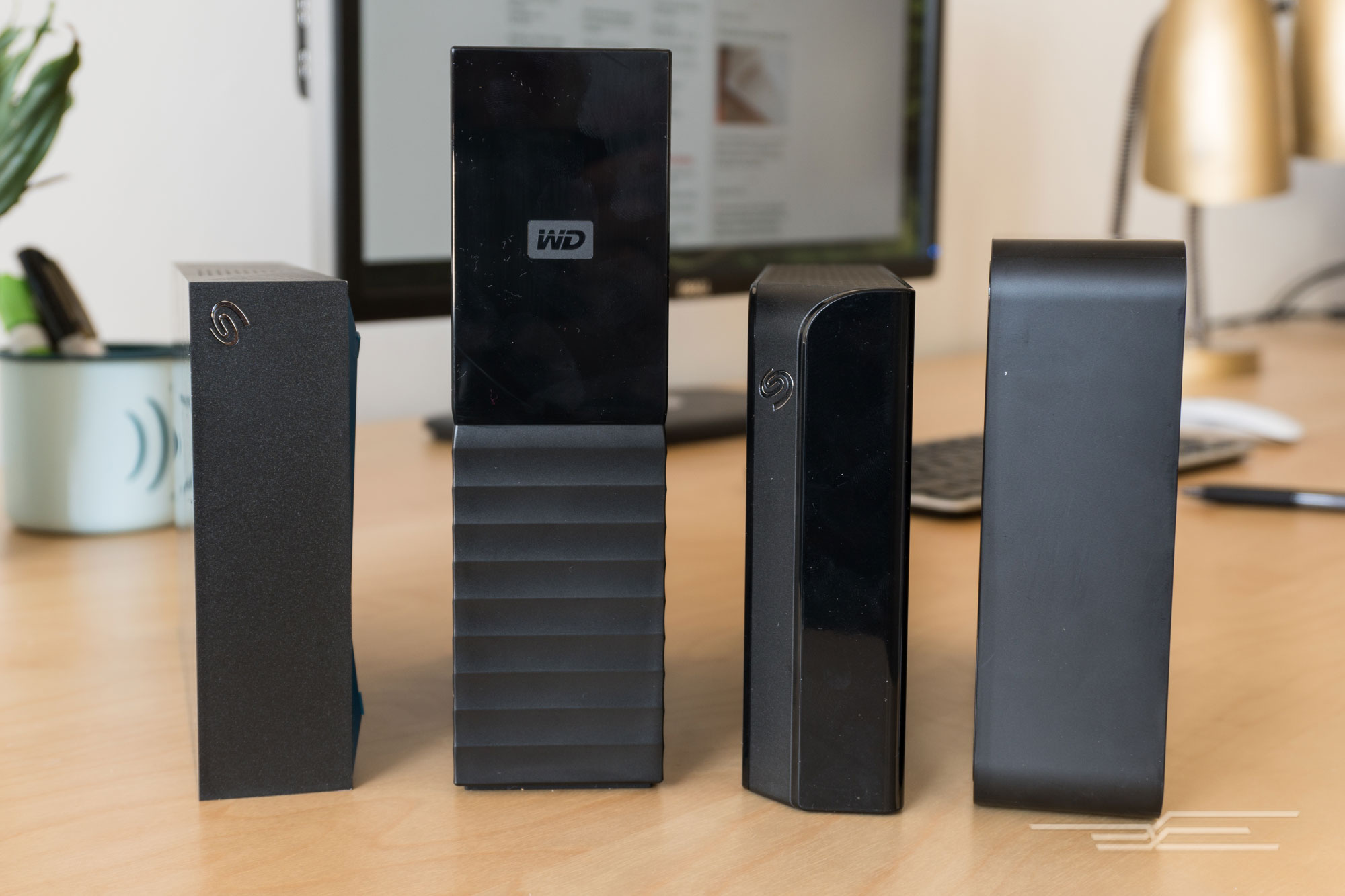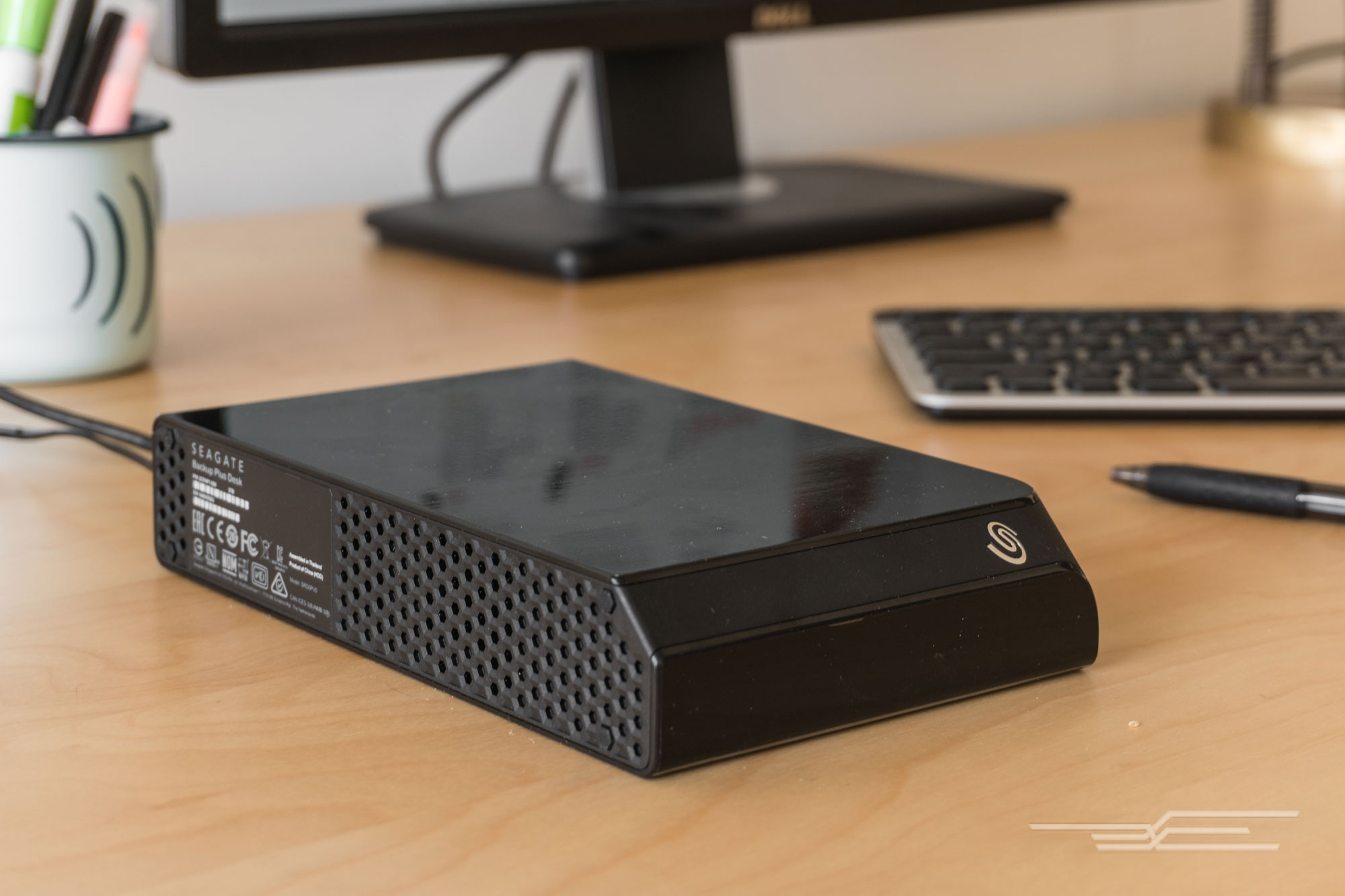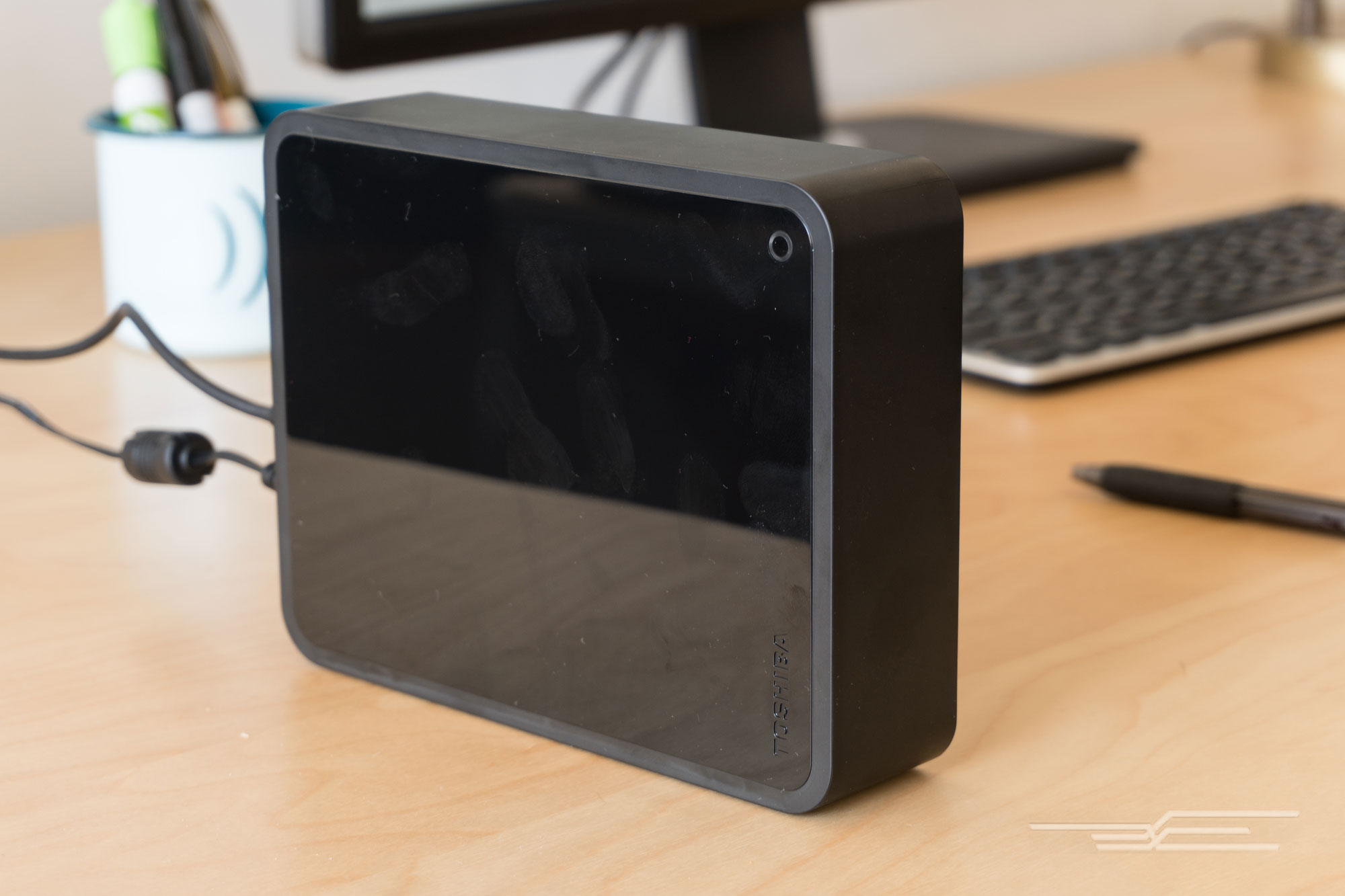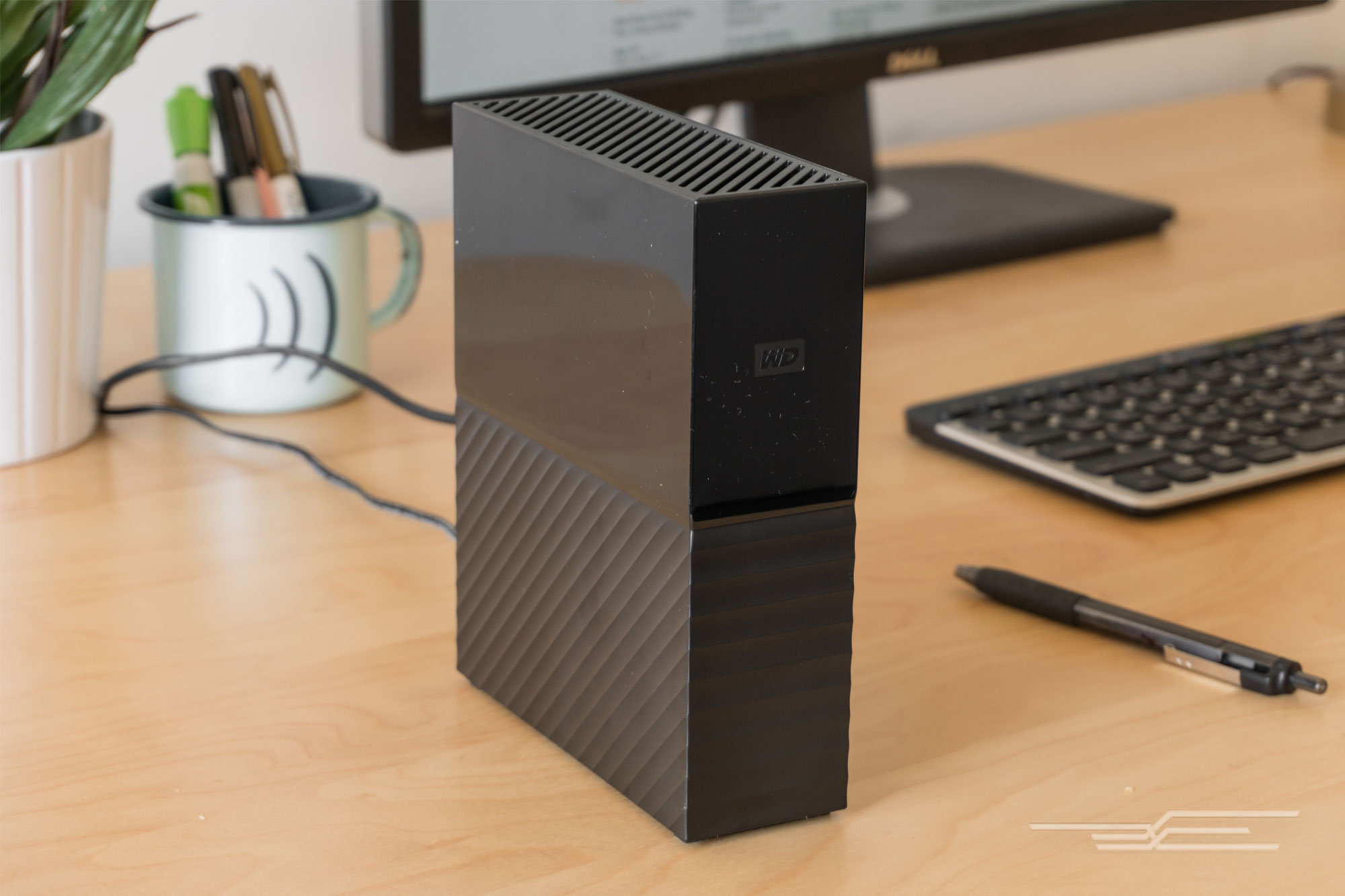Who this is for
If you’re not backing up the important documents and photos on your computer, you should start. Take a few minutes to set up a system that will back up your files automatically to an external hard drive and the cloud. Your computer’s internal drive will stop working someday, and backing up solely to an external drive isn’t a bulletproof strategy to protect yourself from data loss.
You should consider replacing your backup drives between the third and sixth year of use. If your drive dies and you have a cloud backup, you won’t lose data, but restoring from the cloud will take a very long time (and probably blow through your monthly data cap). If you don’t, well, say bye to your stuff. According to statistics from cloud backup service Backblaze, hard drives are most likely to fail either within the first 18 months of use or after three years.
How we picked and tested

Left to right: 2015 Seagate Backup Plus, Western Digital My Book, 2016 Seagate Backup Plus, and Toshiba Canvio for Desktop. Photo: Kyle Fitzgerald
We started with a list of 14 current desktop hard drives, and we used data from an early 2016 survey of Wirecutter readers to guide our research. Of 183 respondents, 55 percent said they’d like to spend less than $200 on a hard drive, and a third favored drives under $150. About a third of respondents said they needed 2 TB or 3 TB drives, and another third wanted 4 TB or 5 TB models. So we tested mostly 4 TB and 5 TB models, which met most respondents’ price requirements, and still left plenty of additional capacity for future storage needs. The 8 TB models usually have better prices per terabyte, but they’re costly and have more storage than most people need.
After narrowing our list of finalists by price and capacity, we tested seven desktop hard drives. For each one, we ran HD Tune Pro, a benchmarking program that tests transfer speeds, access time, burst rate, and CPU usage across the entire disk. You can read a more in-depth explanation of the program on the HD Tune website. We also timed a series of file transfers—a 7.07 GB folder of photos, a 19.7 GB music collection, and a 45.5 GB rip of a Blu-ray movie—from start to finish, running each transfer three times and determining the average to rule out performance hiccups.
To spot any widespread reliability issues, we read through Amazon reviews for each of the drives we tested, and counted the number of drive failures reported by users. This method has shortcomings—see our full guide for more on how we picked.
We also looked at Backblaze’s hard drive reliability ratings from the first half of 2016, which are based on over 68,000 drives used in its cloud backup servers. Backup servers are a very different environment than a box on your desk—bare drives in servers are accessed more often and are subject to more vibrations and more heat; drives in desktop enclosures have more potential points of failure between the power connector, the USB connector, and the USB-to-SATA logic board. Even so, the Backblaze study is the largest, most recent sample of hard drive failures we have access to.
Our pick: 4 TB Seagate Backup Plus Desktop

The Seagate Backup Plus Desktop Drive is the fastest drive we tested. You can also stand it vertically to save desk space. Photo: Kyle Fitzgerald
Seagate’s 4 TB Backup Plus Desktop Drive is the best desktop hard drive for most people because it has the best balance of speed and price. The 3 TB was faster than most of the competition in our file transfer tests, and was one of the top performers in our benchmarks, as well. We tested the 3 TB version, but we recommend the 4 TB model because it’s cheaper per terabyte and Seagate told us that they have identical performance. (Make sure you get the 2016 model, because the 2015 version is slower.) Seagate drives have proven reliable in our personal experience and after extensive research from Backblaze: Just 2.8 percent of its tens of thousands of Seagate drives fail annually.
The 3 TB Backup Plus was one of the fastest drives we tested, with average HD Tune read and write speeds of 150.7 MB/s and 135.3 MB/s, respectively. Though our runner-up’s average write speed was 2.2 MB/s faster, its average read speed was 10.8 MB/s slower. The Backup Plus was also faster than most of its competition in our multifile music and photo transfer tests, and it took just 4 minutes, 13 seconds to write a Blu-ray rip and 5 minutes, 10 seconds to read the same file.
Runner-up: 5 TB Toshiba Canvio for Desktop

Toshiba’s Canvio for Desktop posted times similar to our top pick’s, but it costs more. Photo: Kyle Fitzgerald
If the Backup Plus is unavailable, Toshiba’s 5 TB Canvio for Desktop is a great second choice. Though not as fast as our top pick, the Canvio was faster than the rest of the competition in our HD Tune and multifile music and photo transfer tests. It’s more expensive per terabyte than our top pick, however, and its software lacks the Seagate Backup Plus Desktop’s extra features.
The Canvio, like the Backup Plus, was among the fastest desktop hard drives we tested. The Canvio had an average read speed of 139.9 MB/s, 10.8 MB/s slower than the Seagate, and an average write speed of 137.7 MB/s, 2.4 MB/s faster than the Seagate. The Canvio and the Backup Plus performed roughly the same—within two seconds of each other—in our Blu-ray file transfer tests.
If you need more storage: 8 TB Western Digital My Book

The 8 TB Western Digital My Book has twice the storage of our top pick, but it’s also twice as expensive. Photo: Kyle Fitzgerald
If you want more space—say, you have a ton of large photos or an existing media library and need room to expand in the future—the 8 TB Western Digital My Book is the best option. Its average read and write speeds were much faster than the only other drive we tested with the same amount of storage space, the 8 TB Seagate Backup Plus Hub, and it had better HD Tune speeds and photo and music file transfer times than most lower-capacity drives we tested. It’s currently about $100 more expensive than our top pick, though, so we recommend it only if you want the extra storage.
This guide may have been updated by The Wirecutter. To see the current recommendation, please go here.
Note from The Wirecutter: When readers choose to buy our independently chosen editorial picks, we may earn affiliate commissions that support our work.




